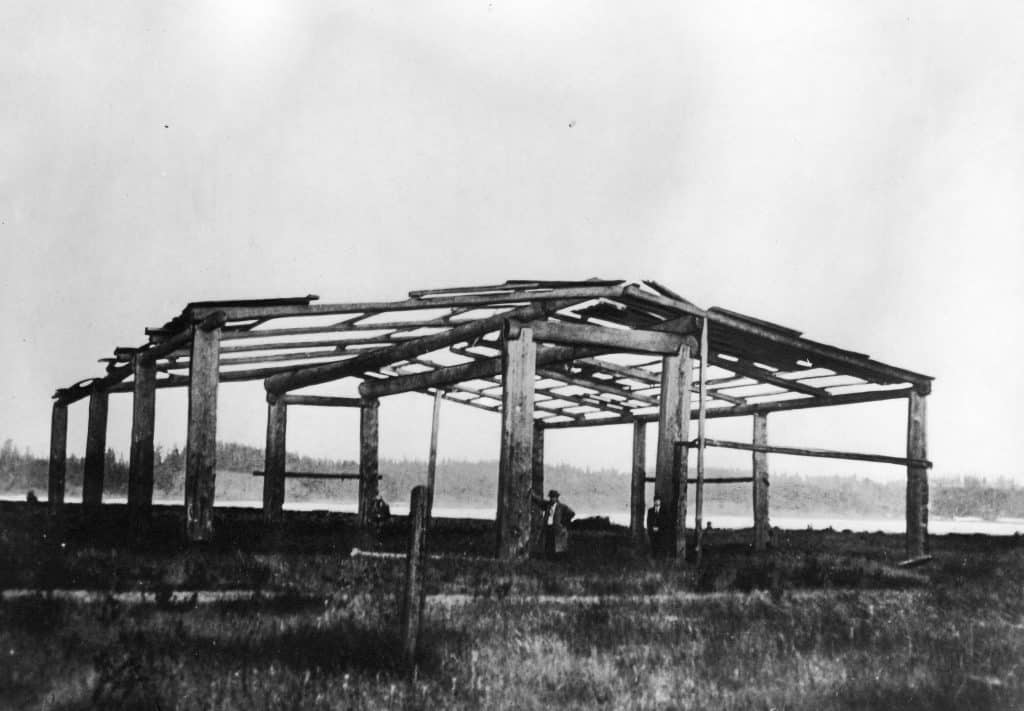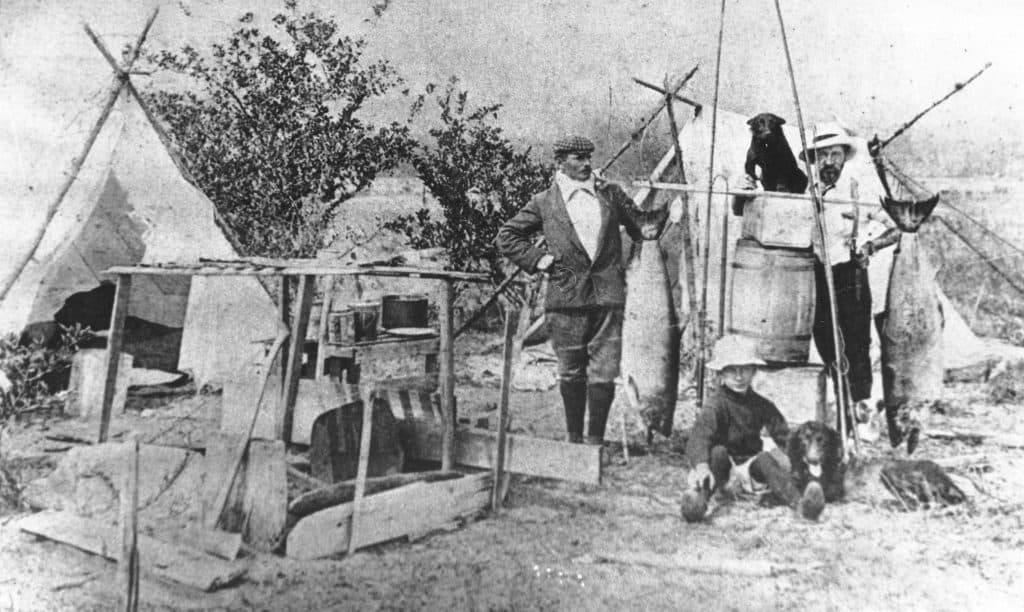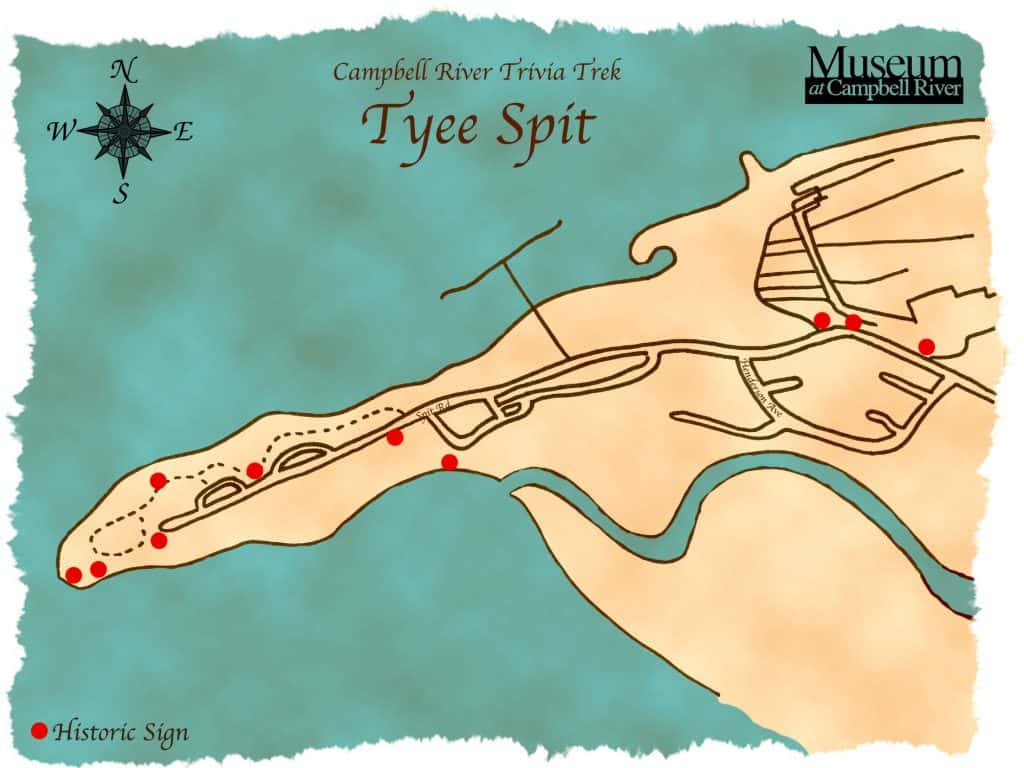Whether you are new to Campbell River, or you’ve spent your life here, you have likely spent some time taking a walk around the Spit. The Spit has long been the focal point for gathering at what is now called the Campbell River. Not always called the “Spit” its original name was ƛ̓əmataʔakʷ, and it was the site of a large fortified village.
The abundant salmon spawning in the river have drawn people to this place for thousands of years. We know this because the remains of fish weirs can be found in the Campbell River estuary and many have been dated to over 1700 years ago. A remarkable age for something made of wood, which would not normally survive in an archaeological site.


In the late 1800s, the large salmon brought wealthy European outdoorsmen seeking the excitement (and bragging rights) of landing a big fish. Word got around, and soon visitors seeking a chance to land big fish were flocking each summer to camp in canvas tents next to the village and fish the Tyee pool from dugout canoes guided by local indigenous men. This sport would eventually develop into the Tyee fishery that still occurs at the spit every August.
Also in the late 1800’s, early logging outfits started to log off the timber in the area and began using the estuary at the mouth to the Campbell River to boom their logs. The industrial era of the Spit and estuary had begun. Over the years, the Spit has been the site of booming grounds, sea plane bases, helicopter bases, and ore offloading docks for the local mines.
Then in 1999, a consortium of organizations along with the City underwent a substantial plan to restore the estuary and the Spit to its natural state. The restoration has been very successful and work to build back the river banks still continues. Today, the Spit continues to host some light industrial activities. It is also now home to a popular city park with paved walking trails. The Spit continues to be a significant place to the Liǧʷiɫdax̌ʷ people. There continues to be a village on the Spit, and the community cemetery, with its mix of old and new hand carved grave monuments, is a local landmark. The estuary and ecosystem of the Spit is increasingly being managed by the Coastal Guardian Watchmen, and in 2017 more than 100 traditional canoes, and their crews, who participated in Tribal Journeys were welcomed to Campbell River by the Liǧʷiɫdax̌ʷ people at the Spit.
- For those that like a task, find the answers to these trivia questions about the Spit. Tyee Spit Trivia Worksheet
- Trivia Trek Spit Map for printing
- Back to Trivia Trek Home

